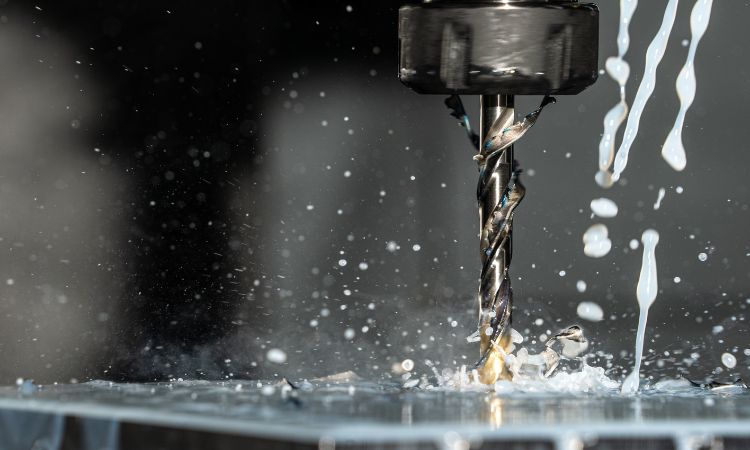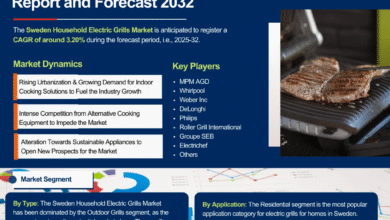Europe CNC Machine Market Outlook 2025–2034

The CNC (Computer Numerical Control) machine industry in Europe is experiencing strong momentum, with the market size standing at over USD 26 billion in 2024 and projected to nearly double by 2034, advancing at a healthy compound annual growth rate of around 7%. This growth reflects Europe’s commitment to precision engineering, industrial automation, and sustainable production systems. Once used mainly in specialized workshops, CNC machines are now a foundation of Europe’s automotive, aerospace, construction, and energy sectors. With the integration of digital technologies such as IoT, robotics, and artificial intelligence, CNC systems are enabling smarter, faster, and more efficient manufacturing across industries.
This blog explores the market by type and application, examines regional dynamics, highlights the competitive landscape, and looks at the key trends shaping the future of CNC machines in Europe.
Market Segmentation by Type
Lathe Machines
Lathe machines dominate Europe’s CNC segment thanks to their versatility in cutting, shaping, and drilling. Widely used in automotive and defense, they are evolving with multi-axis capabilities and advanced automation, ensuring high precision and efficiency.
Miller Machines
Milling machines remain essential for metal and non-metal processing. In aerospace and construction, their ability to execute detailed shaping and contouring is vital. European manufacturers are increasingly relying on advanced milling systems to minimize material waste and boost productivity.
Laser Machines
Laser CNC machines are on the rise due to their unmatched precision in cutting, engraving, and marking. They are especially popular in automotive, electronics, and healthcare manufacturing. Their non-contact and energy-efficient operations make them attractive for industries aiming for sustainability.
Welding Machines
CNC welding machines are gaining traction in heavy industries, construction, and automotive sectors. By automating welding tasks, they improve speed, quality, and worker safety. With Europe investing in infrastructure, demand for CNC welding systems is expected to surge.
Winding Machines
Though a niche category, winding machines are critical for Europe’s power and renewable energy sectors. Used in producing coils for generators, transformers, and wind turbines, they are set to grow steadily as Europe pushes ahead with its clean energy transition.
Others
Other CNC technologies, such as plasma cutters and waterjet machines, are finding applications in specialized sectors like jewelry design, signage, and prototyping. Their ability to handle diverse materials adds to the flexibility of Europe’s manufacturing landscape.
Market Segmentation by Application
Automotive
As one of Europe’s strongest industries, the automotive sector heavily depends on CNC technology. From precision engine parts to electric vehicle components, CNC machines ensure speed, accuracy, and innovation in vehicle production.
Aerospace and Defense
CNC machining is indispensable in aerospace, where components demand extreme accuracy. Leading hubs in Germany, France, and the UK are adopting next-generation CNC systems to meet aircraft and defense production needs while accelerating prototyping cycles.
Construction Equipment
The growth of infrastructure across Europe is fueling demand for CNC machines in construction equipment manufacturing. Automated processes enhance efficiency and consistency in producing large-scale machinery, making them essential to the sector.
Power and Energy
In the energy sector, CNC systems are used to manufacture turbines, generators, and renewable energy components. With Europe’s strong push toward wind and solar power, demand for CNC machining in energy infrastructure is rising.
Industrial Applications
From general manufacturing to factory automation, CNC machines support SMEs and large enterprises alike. They boost productivity, reduce downtime, and enable high customization, making them a long-term investment across industries.
Others
Other applications include medical devices, electronics, and creative industries such as custom furniture and décor. These growing sectors highlight the expanding versatility of CNC systems.
Regional Analysis
Western Europe
Western Europe, led by Germany, France, and the UK, is the dominant region for CNC machines. These countries are pioneers in adopting Industry 4.0, integrating AI and IoT into CNC processes, and leading technological innovation.
Eastern Europe
Eastern Europe is emerging as a cost-effective production hub with countries like Poland, Hungary, and the Czech Republic attracting investments. The region’s skilled workforce and competitive costs are boosting CNC adoption in automotive and industrial applications.
Northern and Southern Europe
Northern Europe’s focus on renewable energy and Southern Europe’s automotive and aerospace hubs, particularly in Italy and Spain, are driving CNC demand. Both regions are poised to benefit from investments in modernized manufacturing.
Competitive Landscape
The European CNC machine market is competitive, with both global giants and regional specialists striving for market share. Companies are investing in automation, AI-driven systems, and sustainable designs. Strategic partnerships, acquisitions, and workforce training initiatives are common, helping manufacturers stay ahead in this fast-evolving sector.
Key Trends and Developments
-
Industry 4.0: Integration of smart systems and connected technologies is reshaping CNC operations.
-
AI and IoT: Predictive maintenance and real-time performance monitoring are improving efficiency.
-
Sustainability: Energy-efficient machines are being prioritized in line with Europe’s climate goals.
-
Customization: Rising demand for bespoke products is driving investments in high-precision CNC systems.




